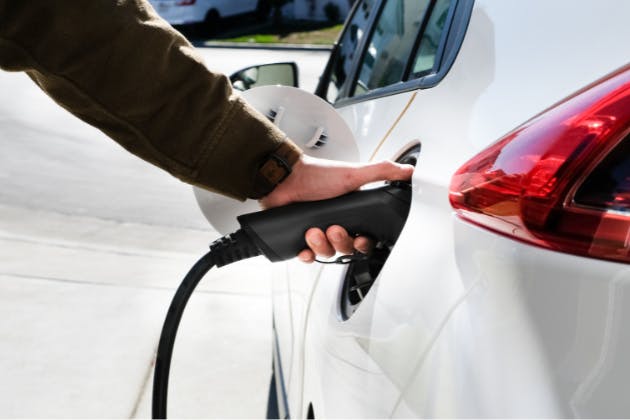Electric vehicles (EVs) have completely changed how we commute by providing a more environmentally friendly and clean form of transportation. It's important to take care of your electric car's battery to get the best performance and longevity out of it. In this article, we'll go through the best advice for extending the battery life of your electric vehicle while it's being charged.
Contact our electricians in Hythe, Folkestone, New Romney and Kent by calling us 01303 647340 or 07971 857475, or by email at help@inspiredsmartliving.com.

Tips to Maximise EV Battery Lifespan
Avoid Frequent Full Charging
EV batteries are designed to operate optimally when their charge levels are maintained between 20% and 80%. Charging the battery to 100% regularly can cause the battery cells to degrade faster due to the increased voltage stress. Similarly, allowing the battery to deplete to 0% frequently can also be harmful, as deep discharges can lead to increased wear and tear on the battery.
By keeping your battery within this optimal range, you can reduce the stress on the cells and prolong their lifespan. Many EVs offer settings to limit the maximum charge level, which can help automate this process and prevent overcharging.
Use Slow Charging
Whenever feasible, opt for Level 1 (120V) or Level 2 (240V) chargers instead of fast chargers (DC fast charging). Slow charging generates less heat and is gentler on the battery, reducing the risk of thermal stress and degradation. Fast chargers can be convenient for quick top-ups, especially during long trips, but frequent use can accelerate the aging process of the battery. By using slow charging methods for daily needs, you can maintain a healthier battery and extend its usable life.
Charge in Moderate Temperatures
Batteries are sensitive to temperature extremes, which can affect their performance and longevity. Charging your EV in a temperature-controlled environment helps mitigate the adverse effects of both high and low temperatures. Extreme heat can increase the rate of chemical reactions inside the battery, leading to faster degradation.
Conversely, extreme cold can increase the battery’s internal resistance, making it harder to charge and potentially causing permanent damage. If possible, charge your EV in a garage or a shaded area to keep the battery within a moderate temperature range.

Precondition Your EV
Preconditioning your EV involves using the vehicle’s systems to either heat or cool the battery to an optimal temperature before charging. This is particularly important in extreme weather conditions. Cold batteries charge more slowly and can be damaged if charged at a high rate, while hot batteries can suffer from thermal stress.
Preconditioning helps ensure that the battery is at a suitable temperature for charging, which can improve efficiency and reduce wear. Many modern EVs have built-in preconditioning features that can be activated via the vehicle’s settings or a connected app.
Regular Software Updates
Keeping your vehicle’s software up-to-date is crucial for battery management and efficiency. Manufacturers often release software updates that include improvements to the battery management system (BMS), which optimizes charging algorithms, enhances thermal management, and implements new strategies to extend battery life.
Regularly checking for and installing these updates ensures that your EV benefits from the latest advancements and protections. This can often be done over the air (OTA) or during routine maintenance visits.
Monitor Battery Health
Monitoring your battery’s health status is essential for early detection of potential issues. Most EVs come equipped with diagnostic tools that provide information on the battery’s state of health (SOH), capacity, and any faults or warnings. Regularly reviewing this data can help you identify trends or anomalies that may indicate a problem.
If any issues are detected, it’s advisable to consult a professional service to address them promptly. Keeping an eye on the battery’s performance and condition can help prevent minor issues from becoming major problems, ensuring a longer lifespan for the battery.
Avoid Deep Discharges
Deep discharges, where the battery level drops below 10%, can be particularly harmful to EV batteries. Each deep discharge cycle can cause a small amount of irreversible capacity loss, which adds up over time. To avoid this, try to keep your battery’s charge level above 10%, even during extended trips. Planning your journeys to include regular charging stops can help maintain a healthier battery.
Additionally, many EVs offer range alerts or settings to warn you when the battery level is getting low, helping you avoid deep discharges and preserve battery health.
Get in Touch
Contact our skilled electrical contractors in Folkstone, Hythe, New Romney and Kent by calling us on 01303 647340 and we'll be happy to help.


